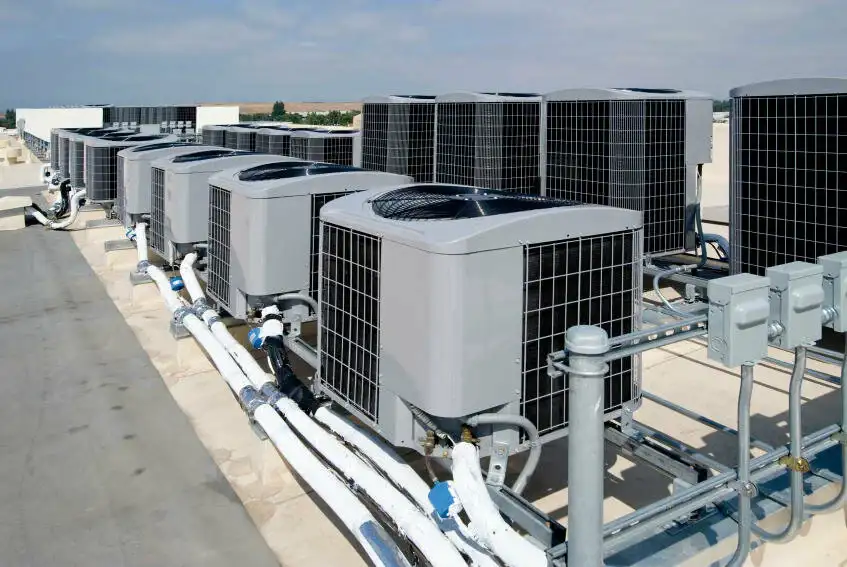Ductless air conditioners are good for saving energy bills as they provide the best customized comfort to occupants. They are also known as ductless mini-split systems, which have become quite popular. However, how do the systems work, and why are more people switching towards this system than traditional HVAC units? Stick to this guide and you will get to know the basic principles of these units.
However, if you are planning to construct or reconstruct a building. You may be searching for a reliable Ductless HVAC Estimating Services to handle your budget-related issues. With professional help, the occupants can get a detailed cost breakdown of all elements. However, without any further delay, let’s discuss all about ductless air conditioners, their components, the installation process, and more!
EXPLORE WHAT ARE DUCTLESS AIR CONDITIONERS AND HOW THEY MAINTAIN THE INDOOR TEMPERATURE MORE SMARTLY!
Ductless Air Conditioner: Explained
A ductless air conditioner keeps the indoors cool and heated according to the desire. The best thing is that there is no need for ductwork. If we compare it with older AC systems, it was dependent on a network of ducts to deliver hot and cold air. Whereas, ductless systems work by delivering air to different zones. Hot and cold air is delivered to different units in different rooms.
Their two main components are as follows, which are connected through a conduit:
- An outdoor condenser/compressor unit
- One or more indoor air handling units (evaporators)
The Basic Working Principle of Heat Transfer
The basic functional principle of heat transfer is that heat changes from outside or vice versa. However, the process depends on a refrigerant, which is a liquid that absorbs heat as it evaporates.
The overall process works as follows:
- First, the indoor air is pulled into the unit.
- The fluid inside the indoor unit absorbs the heat from the air.
- Now, the heated fluid flows to the outdoor unit through the conduit.
- In case of cold fluid, it returns to the indoor unit, and this is how the process works again and again.
What are the Main Components of a Ductless Air Conditioner?
To discuss the channelless air conditioner in detail, let’s examine its components in detail:
Outdoor Unit (compressor/capacitor)
It is responsible for transferring liquid (cold) between the indoor and external units. While the capacitor coil releases heat that is absorbed by the cooling system, or absorbs external heat under the heating system. In addition, it also blows the outer air in the coil to increase the heat transfer.
Indoor unit (air processor/evaporation)
In the indoor unit, the evaporation coil absorbs heat from the air using the cold. Second, the blower is responsible for blowing cold or hot air into the room. Then it also contains air filters that implies dust and other particles to clean the air.
Conduit (Line Set)
The conduit is the part of the system that connects both indoor and outdoor units. It has the following components:
- Refrigerant lines (suction and liquid)
- Drain line (for condensate removal)
- Electrical wiring
Thermostat or Remote Control
The next thing is a thermostat, which is used to keep the temperature moderate and adjust the fan speed. However, it has other functions too!
If you are working on a large-scale project, such as for commercial or industrial use, then it will become difficult for you to estimate the overall cost. So, why not trust a reliable Construction Cost Estimating Firm and get a comprehensive breakdown of all elements and their costs?
Benefits of Ductless Air Conditioners
- With ductless air conditioners, there is no risk of energy loss from a leaky ductwork.
- Modern inverter compressors work efficiently by adjusting the speed according to the demand. As a result, the overall energy consumption is also reduced.
- Every room can adjust its temperature according to its comfort because every unit has its thermostat or remote.
- Set temperatures freely for different rooms at a time.
- The occupants do not need to install ductwork while selecting a mini-split AC.
- It is best for installing in older homes where ducts are not available.
- The units contain air filters that improve the air quality.
- Indoor units operate as quietly as 19 dB (quieter than a whisper).
IN CASE OF FINANCIAL PLANNING, CONTACT OUR EXPERT ESTIMATORS TO HANDLE ALL YOUR BUDGET AND TIMELINES!
Conclusion
To sum it up, Ductless air conditioners are best to install to get rid of ductwork and all expenses. This advanced refrigeration technology provides a flexible and customizable solution for indoor climate control. You can control temperatures at any time at any room with the remote. Some smart air conditioners do not even require a remote; they are connected to wifi and mobile phones. So, upgrade your systems for more efficiency.

